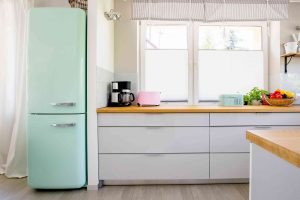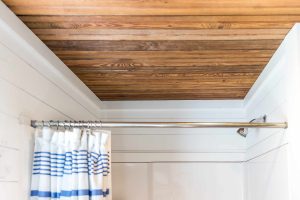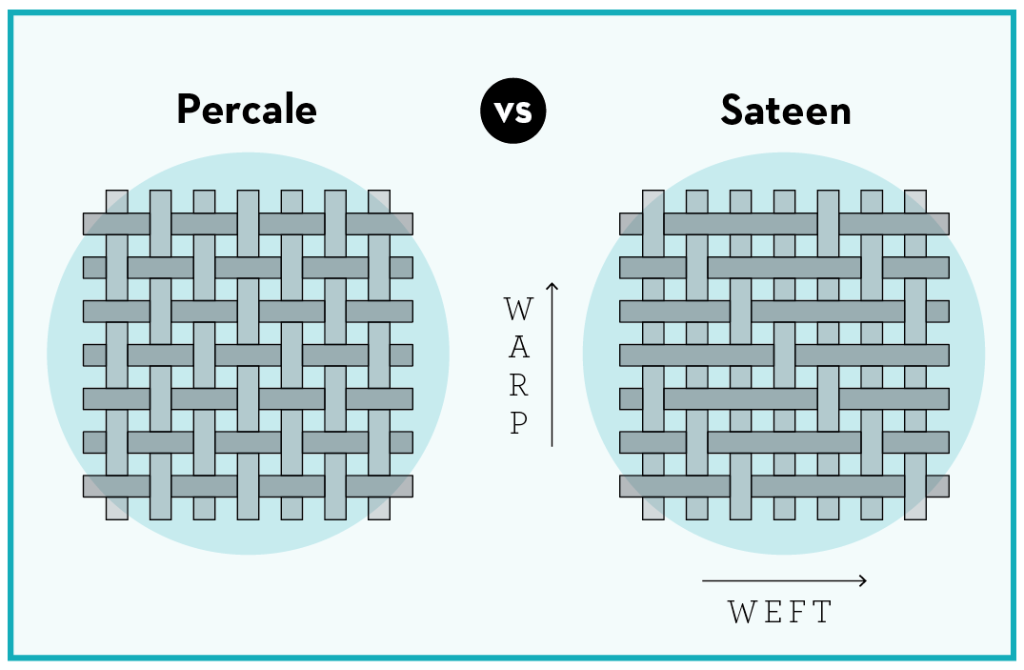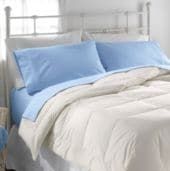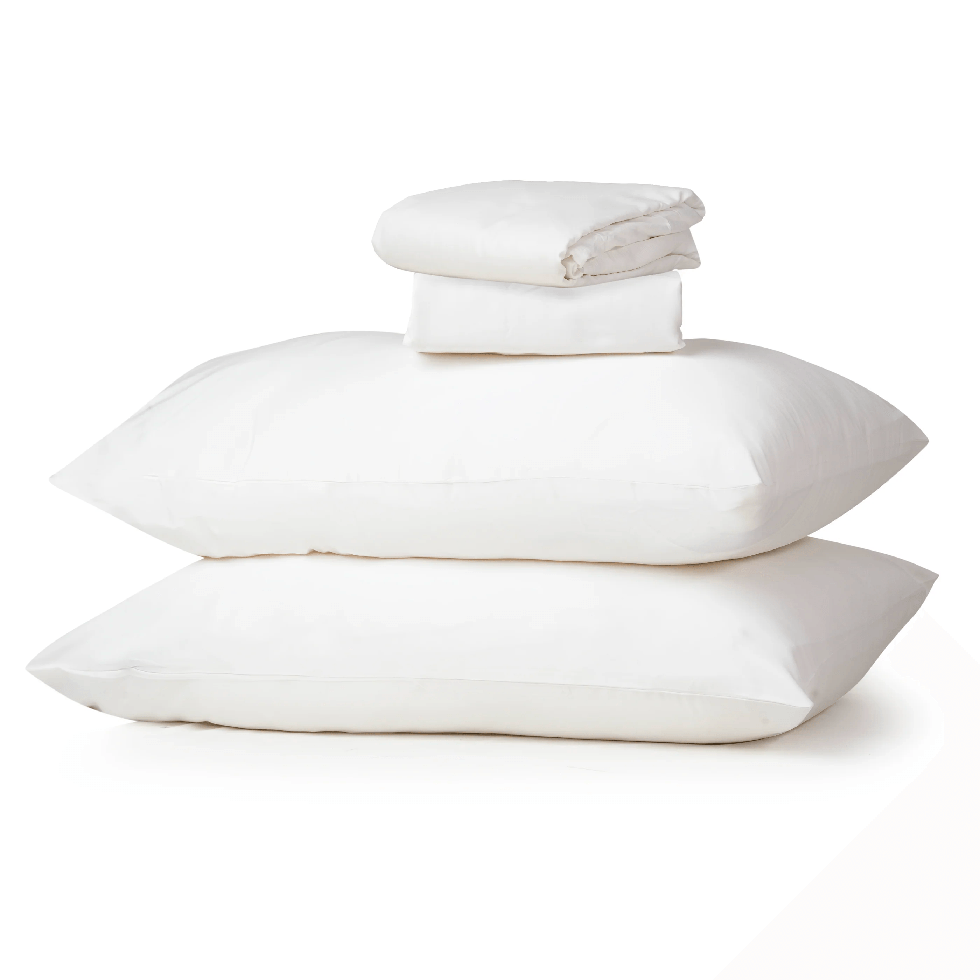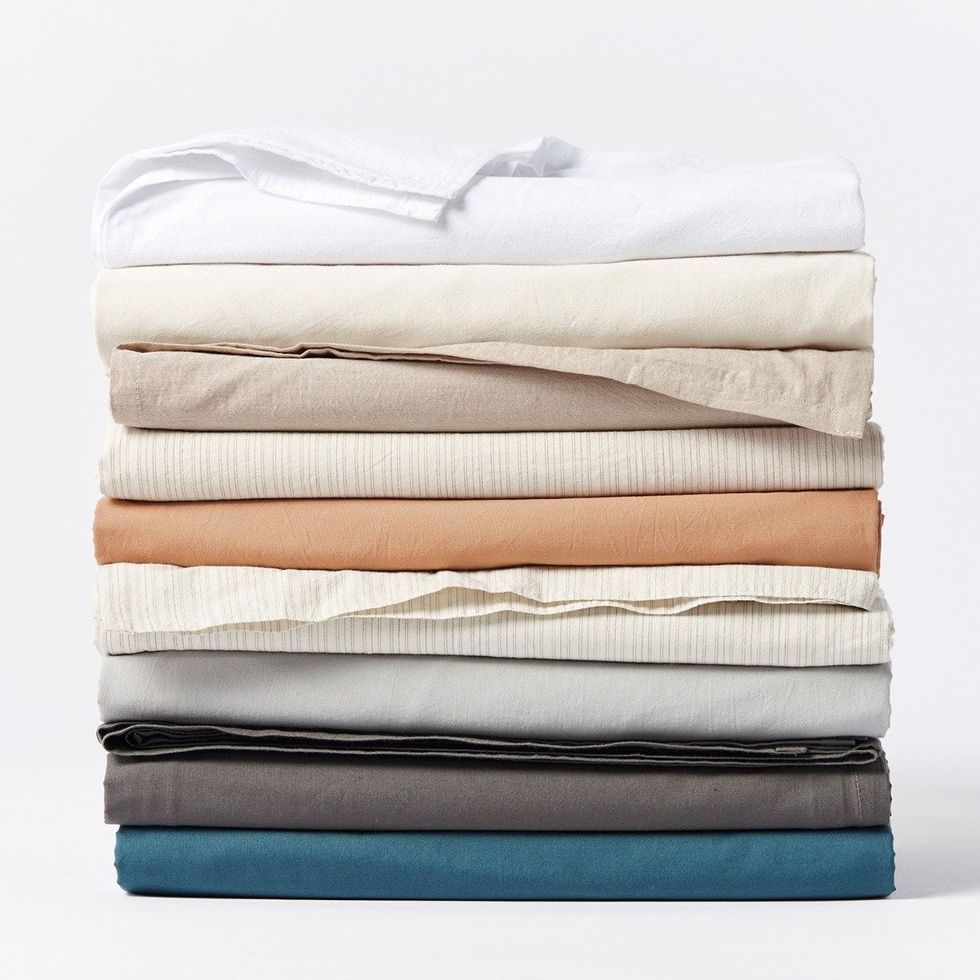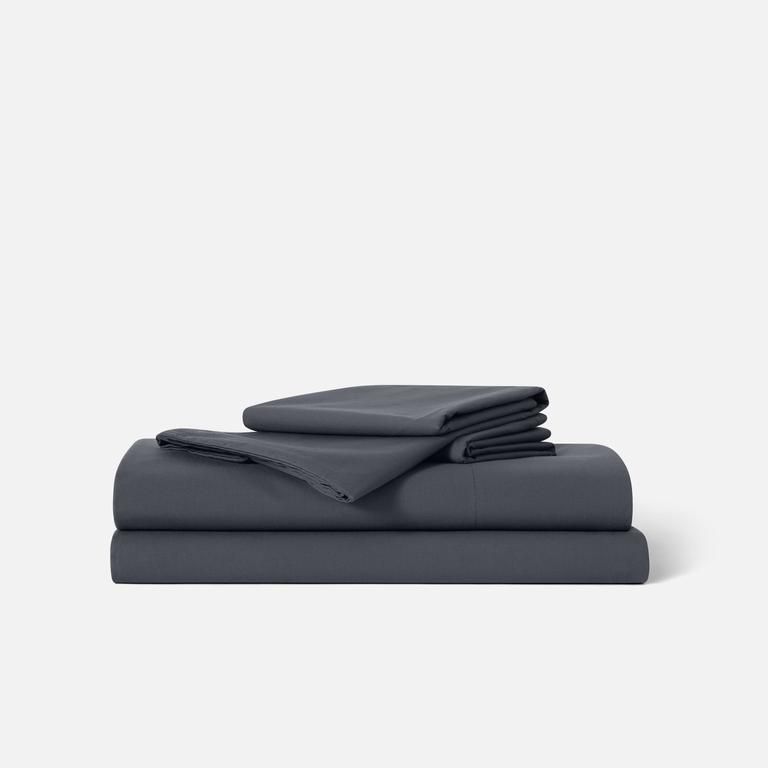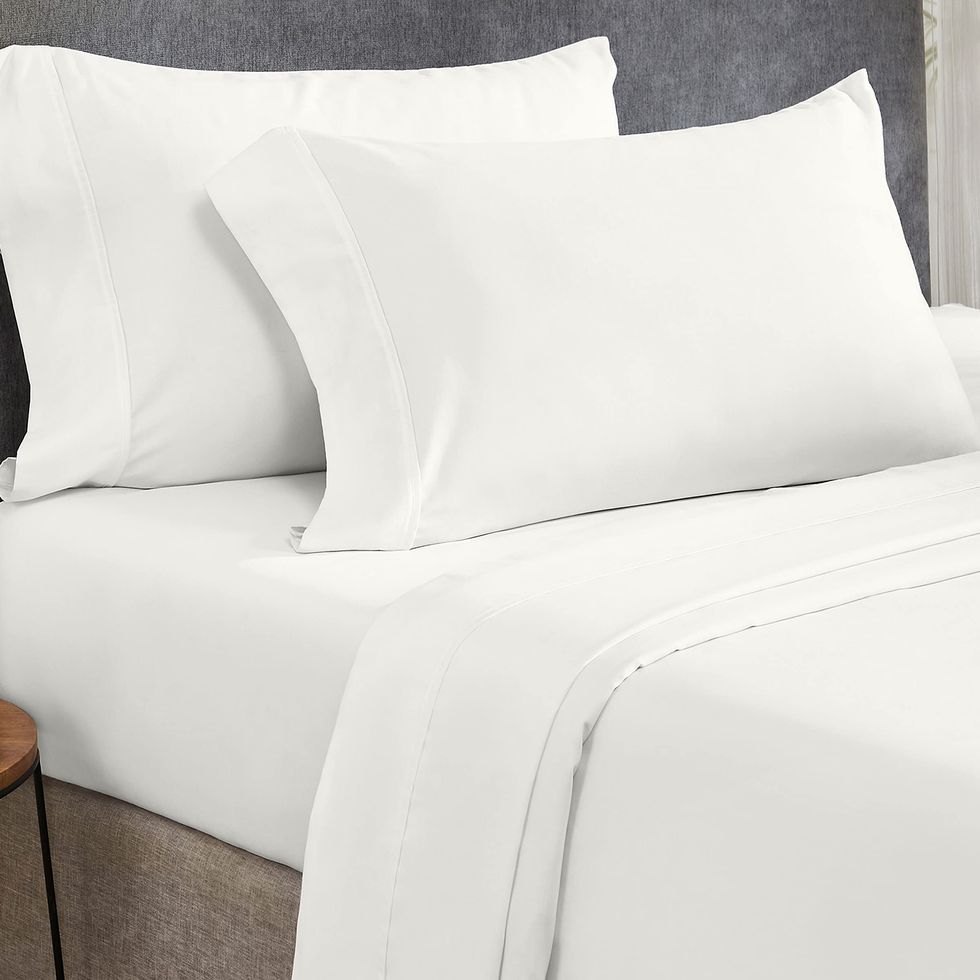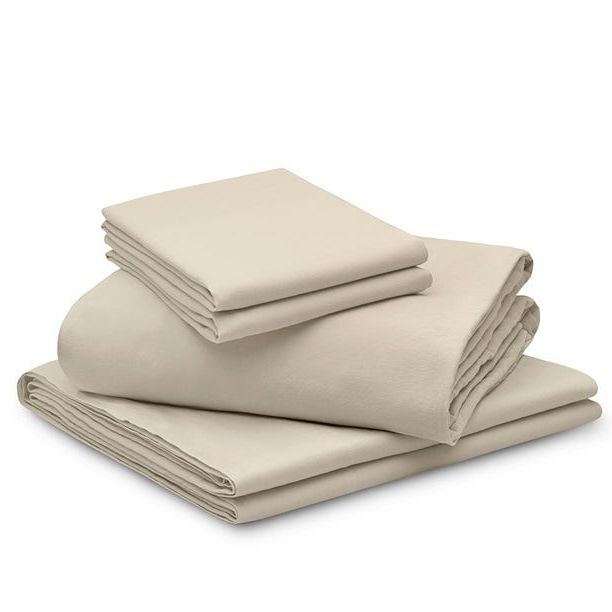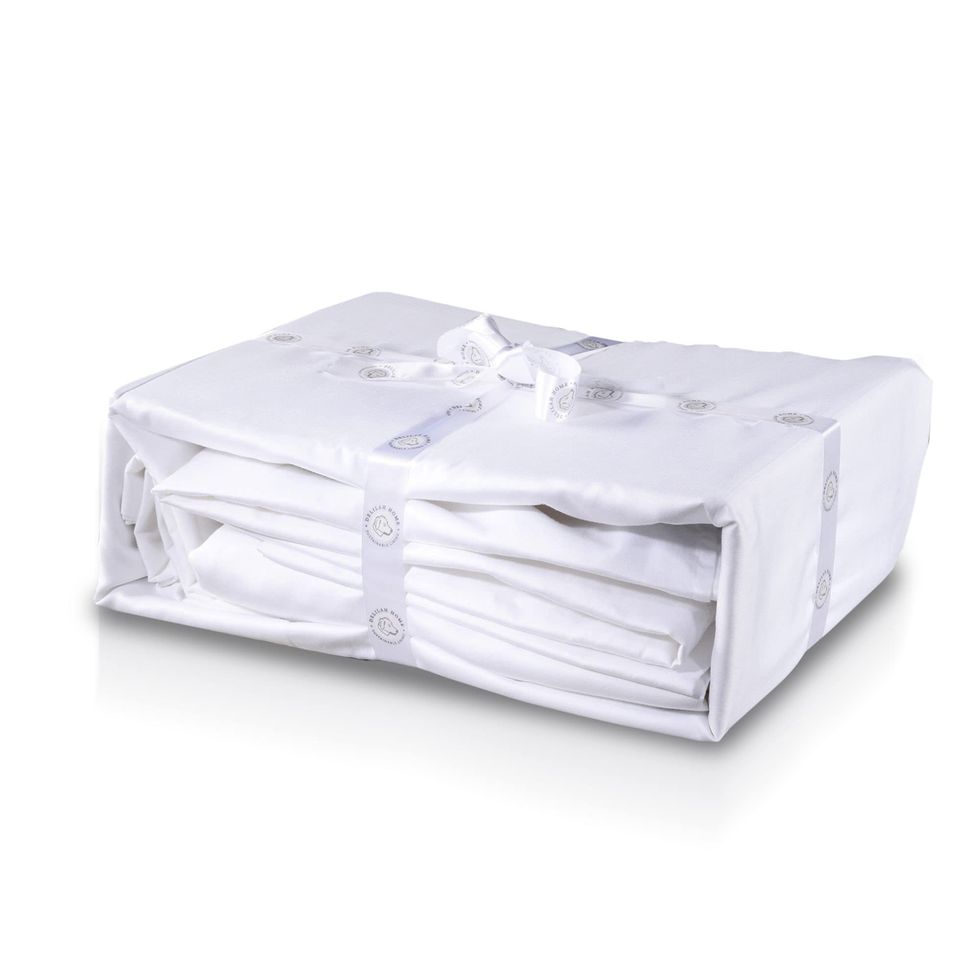Shopping for the best sheets is tricky enough, even if you know you prefer cotton over any other materials. But when looking for the best cotton sheets out there, you’ll likely come across technical language like “percale” and “sateen” which can make it more difficult to find what you’re looking for. While these terms may seem foreign to some, they’re fairly simple once you learn what they mean. Percale and sateen describe the weave of the fabric, which is just as important as knowing what fibers (cotton, linen, silk, etc.) the sheets are made of.
Luckily, the Good Housekeeping Institute Textiles Lab is full of expert analysts with backgrounds in textiles science who are constantly testing sheets. In fact, we’ve evaluated more than 250 sheet sets in recent years for everything from softness and wrinkle resistance to fabric strength, shrinkage and more. In addition to putting sheets through standardized Lab tests using specialized equipment, we’ve worked with hundreds of consumer testers who try them out at home before providing thorough feedback on their experience. The results speak for themselves, and we’ve found the best percale sheets and best sateen sheets available for every type of sleeper. Here’s how to decide which weave is right for you.
What’s the difference between percale and sateen sheets?
Percale sheets are lightweight, airy and crisp, while sateen sheets feel silky smooth and substantial. The difference is due to how the yarns are woven. Even though they’re made with the same materials — cotton or cotton blends — the structural differences result in very different textures and physical properties for each fabric.
Percale sheets have a basic one-over, one-under plain weave that allows for more interlacings — points where the threads overlap — making it one of the more durable fabrics used in bedding. This structure also provides percale’s signature light and crisp feel while offering the necessary breathability to maintain a comfortable body temperature. On the other hand, sateen sheets typically have a four-over, one-under satin-like weave that provides a smooth feel and nice sheen. Plus, it doesn’t tend to wrinkle as much as percale.
Both types of sheets are available in a wide range of thread counts. Contrary to popular belief, higher thread counts often don’t translate to better quality sheets, but we’ve found that sheets in the 300 to 500 range have a great balance of softness and durability.
What is percale?
Percale sheets are known for their crisp feel and lightweight quality and are often compared to button-down shirts, which typically have the same 1:1 weave. This classic sheet is also airy and breathable, making it a great option for hot sleepers or those who live in warmer climates. The downside to percale sheets is that they can feel rough or scratchy compared to sateen sheets and tend to wrinkle more because of their crisp, durable nature.
Pros:
- Feels lightweight and crisp
- Breathable
- Durable
Cons:
- Wrinkles more easily
- Can feel rough when new
But while percale can often feel rough compared to sateen, L.L.Bean’s Pima Percale Sheet Set still earned high softness ratings with consumer testers, thanks to the premium Pima cotton, and excelled in durability testing in our Lab. Testers also loved the breathability and raved about the cool-to-the-touch feel. Alternatively, if you’re looking for something that’s a fraction of the price without compromising on quality, Sweave’s Egyptian Cotton Percale Sheets are one to look at. Just note that our experts weren’t able to verify the Egyptian cotton claims.
Searching for an even softer percale sheet? Opt for The Crisp Sheet Set from Tuck. It earned the highest marks in a blind softness test, thanks to the feel of the cotton-lyocell blend. Or if you prefer organic bedding, Coyuchi’s Organic Percale Sheets have the same relaxed look with GOTS-certified organic cotton that one tester called “soft [and] luxurious yet crisp and cool.”
READ MORE: The Best Percale Sheets, Tested by Experts
What is sateen?
Sateen sheets stand out for their smooth feel and slight sheen, with some fabrics having a slippery or silky texture. Sateen bedding is ideal for those who prefer softness over crispness. The fabric is also inherently more wrinkle-resistant compared to percale, and some sateen sheets are even treated with a wrinkle-resistant finish for a no-iron, picture-perfect look. But keep in mind that sateen sheets can feel heavier or thicker than percale sheets, so they’re best suited for someone looking for a cozy, soft sheet. They don’t provide the same breathability as percale.
Pros:
- Silky and smooth feel
- Slight sheen
- Durable
- Tends to wrinkle less than percale
Cons:
- May feel too thick for some
- Not great for hot sleepers
The Brooklinen Luxe Core is one of the most popular sateen sheet sets available with quality fabric that’s both smooth and durable. Not to mention, the fitted sheet includes game-changing “short” side and “long” side labels for easy bed-making. California Design Den’s Everyday Soft Sateen Sheets are also an excellent option, outperforming other sateen options more than four times its price, and they come in a wide variety of colors at an affordable cost.
For an even softer feel, Riley’s Organic Cotton Sheet Set earned some of the highest softness ratings across all other cotton sheets in our tests, with testers calling them “soft yet airy.” Although, if the organic factor is important to you, we weren’t able to verify if the set is fully organic. For a fully certified organic option, consider Delilah Home’s Organic Cotton Bed Sheets. Not only are they GOTS-certified organic, soft and lightweight but they’re also under $200.
READ MORE: The Best Sateen Sheets, Tested by Experts
The final verdict: percale or sateen?
Our testers typically prefer the feel of sateen in side-by-side comparison tests, but ultimately it’s a matter of personal preference. Our evaluations show that while percale fabric is inherently stronger and sateen is inherently softer, both sheets perform well in our Lab and at home with consumer testers.
- If you love a light, crisp sheet with good breathability and aren’t bothered by wrinkles, go with percale.
- If you prefer a soft, smooth sheet with a little more wrinkle resistance and thickness, go with sateen.
Why trust Good Housekeeping?
Grace Wu joined the Good Housekeeping Institute in 2022 as a textiles product reviews analyst with a focus on hands-on testing and evaluating consumer data. With a strong background in textile engineering, she has evaluated all sorts of bedding products including sheets, pillows, silk pillowcases and more using specialized laboratory equipment and feedback from hundreds of consumer testers. Prior to working at Good Housekeeping, Grace earned a Master of Engineering in Materials Science & Engineering and a Bachelor of Science in Fiber Science from Cornell University.
Textiles, Paper & Apparel Lab Product Analyst
Grace Wu (she/her) is a product reviews analyst at the Good Housekeeping Institute‘s Textiles, Paper and Apparel Lab, where she evaluates fabric-based products using specialized equipment and consumer tester data. Prior to starting at Good Housekeeping in 2022, she earned a master of engineering in materials science and engineering and a bachelor of science in fiber science from Cornell University. While earning her degrees, Grace worked in research laboratories for smart textiles and nanotechnology and held internships at Open Style Lab and Rent the Runway.
Read the full article here



